 This year certainly turned out to be like no other. At times it felt like it was dragging on, yet it’s somehow surprising that it is almost over. Faced with a world-wide crisis, we certainly learned a lot about ourselves and our fellow humans this year. I am cautiously optimistic looking forward, but also realize that there are still many hurdles we need to overcome before our lives return back to some form of “the new normal.” I am determined to play my part in supporting you on this rocky journey with my writings, yoga practices and all our lovely interactions.
This year certainly turned out to be like no other. At times it felt like it was dragging on, yet it’s somehow surprising that it is almost over. Faced with a world-wide crisis, we certainly learned a lot about ourselves and our fellow humans this year. I am cautiously optimistic looking forward, but also realize that there are still many hurdles we need to overcome before our lives return back to some form of “the new normal.” I am determined to play my part in supporting you on this rocky journey with my writings, yoga practices and all our lovely interactions.
Here is a quick summary of the subjects that we’ve covered in 2020, just in case you missed something. And, as always, I would love to know what topics are the most relevant to you right now. Please tell me in the comments below what you would like to discuss next year!
New yoga series
This year we released two new yoga series that contain a treasure trove of articles and practices that cover your entire physical structure and your physiology as it relates to breathing. Both series are now available for the holiday rate of $35 each. Check them out!
Why bother with breath
This year the subject of breathing had become particularly relevant. Now, more than ever, we need to teach ourselves and our students how to breathe more efficiently on and off the mat, how to use breath to calm our agitation and regulate our energy and biological processes.
Breath: A path to stability in uncertain times
Let’s question some widely accepted assumptions about breathing and investigate the most effective breathing patterns; we will compare modern understanding of the breathing process with traditional yogic approach and analyze the usefulness of some traditional breathing techniques in our daily lives.

Nose vs mouth breathing: Which one is better for your health?
In a recently released book Breath: The New Science of a Lost Art James Nestor documents his experience with a Stanford mouth breathing experiment. In this experiment, he was supposed to breathe exclusively through his mouth for ten days and then exclusively through his nose for the next ten days. His experience of breathing through the mouth was eerily similar to eating a lot of junk food. Read more>
 Your vital lung capacity: Why is it important and how can you improve it with yoga?
Your vital lung capacity: Why is it important and how can you improve it with yoga?
By now it is widely accepted that vital capacity is a reliable predictor of one’s mortality. Forced vital capacity test puts a number to your vital capacity – it shows how much air you can take into your lungs and then actively expel. The ability of your lungs to do that depends on two key factors: lung compliance and lung elasticity. Let’s look at those more closely. Read more >

Dual roles of your diaphragm and why they are essential in your yoga practice
Your diaphragm separates your thoracic and abdominal cavity, but at the same time it connects those two cavities during the process of respiration and the action of spinal stabilization. Understanding both of those functions is essential in our yoga practice, so let’s take a close look at how they work. Read more >
 Gas exchange within the body: Don’t rush to get rid of carbon dioxide
Gas exchange within the body: Don’t rush to get rid of carbon dioxide
Asthma is an immune system sensitivity that usually gets triggered by an external factor: dust, pollen, viruses, and so on. Once the inflammatory response begins, it immediately constricts the airways, which makes it harder to push the air out. The natural response is to try to breathe in more, and the person begins to hyperventilate. When somebody begins to hyperventilate, the usual advice is to “take few deep breaths”, but turns out that this is the opposite of what they need. Here is why >
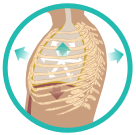 The mechanics of inhalation and the proper way to inhale in yoga
The mechanics of inhalation and the proper way to inhale in yoga
There is no consensus in the yoga world about what kind of breathing is best. You will hear that chest breathing is bad, or that belly breathing is bad, and that diaphragmatic breathing is the best. Do we breathe from chest to belly or from belly to chest? I actually find that often in those discussions we are not even talking about the same things. Let’s take a closer look at inhalation >
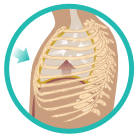
The mechanics of exhalation and the preferred way to exhale in yoga
You can intentionally lengthen your exhalation and make it more controlled by engaging the muscles of your core. There are three main mechanisms to do it >
 What is your optimal breathing rate and why it matters
What is your optimal breathing rate and why it matters
Many of your body’s physiological processes have a rhythmic nature: your heartbeat, blood pressure, digestive peristalsis, breathing rate and many others. Occasionally those physiological rhythms can become synchronized, which improves the system’s efficiency and has great health benefits. Is there anything we can consciously do to synchronize our circulatory and respiratory rhythms? Read more >

To hold or not to hold? Is breath holding detrimental or beneficial to your body?
Just like athletes train their bodies and their breathing capacity for bigger and bigger challenges necessary in their sport, we can pre-condition our respiratory systems to handle wider swings in blood gas balance for the purpose of making our systems more resilient. Read more >

Hum your way to health: How to naturally increase nitric oxide in your body
The vasodilator gas nitric oxide (NO) is produced in the sinuses and is excreted continuously into the nasal airways. NO improves oxygen transport throughout the body and oxygen absorption in the lungs. It relaxes vascular smooth muscle and allows blood vessels to dilate. NO also has antifungal, antiviral, antiparasitic and antibacterial qualities and is currently being tested as potential treatment for COVID-19. How can we increase NO production in the body naturally? Read more >
How to digitize your yoga teaching
Many yoga teachers had to shift their work online. Here are some suggestions on what you can do to make your digital teaching run more smoothly.

The pros and cons of teaching yoga online
I’ve been teaching yoga online for over 12 years. In the course of those years technology has evolved, connection and camera quality has greatly improved, and all sorts of other video conferencing options had popped up on the market. Here is what it takes to teach yoga online, and what I have learned over those years. Read more >

How to move your yoga teaching online with video conferencing or live streaming
There are two main ways you can teach your yoga classes online: video conferencing and live streaming. Video conferencing implies an exchange between the teacher and the student – the teacher responds to what she sees on the screen and adjusts her instructions accordingly. Live streaming means that you offer a yoga class online and students choose to join your live stream. Students can see you, but you cannot see your students or react to them. Here is a simple step-by-step plan you can follow to set this up quickly. Read more >
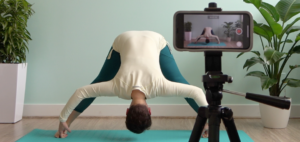
How to record your own yoga videos and offer them for sale
Setting up a full blown virtual yoga studio is time-consuming and labor-intensive. There are many details that go into selling yoga videos online, so you would need to acquire some new skills or pay other people to set them up for you. Today we will focus on how to do it yourself, right now, with minimal equipment and minimal financial investment. Read more >
Refine Your Story: How to Effectively Communicate with Your Potential Yoga Students
As many yoga teachers move on to teach on their own, we have to take steps to promote ourselves and our services (which many yoga teachers are not fond of). We actually have a choice in how we view this issue of self-promotion – we can approach it from the place of fear and dread, or we can view it as an opportunity to clarify our vision and expand our reach. And it can actually be fun and enlightening.
The secret formula that will grow your yoga business
In the current climate we cannot rely on yoga studios, gyms and other locations to bring yoga students to us; we are left to our own devices and have to figure out a way to find and attract those students ourselves. Here is how we can do it >

Who are your yoga students and what problems do they face?
If you identify the underlying frustrations that your yoga students experience and offer solutions, they will be much more likely to engage your services. Read more >
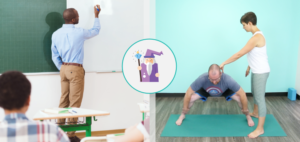 Two main qualities that define a good teacher and attract new students
Two main qualities that define a good teacher and attract new students
Our own lives are being steered by all sorts of guides who step in at just the right moment to assist us on our journey. We all get guidance from parents, teachers, coaches, partners, doctors, mentors, writers, leaders, therapists, and so on, at different stages of our lives. Yoga teachers can be those guides, as well, as long as they play a role in the hero’s journey. Read more >
 How to make it easier for potential yoga students to sign up for your services
How to make it easier for potential yoga students to sign up for your services
After they browse through your website and determine that you deserve trust and they are interested in your services, your potential students still have all sorts of doubts and questions swirling in their heads. We need to give them a simple plan to follow to address their fears and make it easier for them to make that purchasing decision. Read more >
 How to motivate students to engage your services
How to motivate students to engage your services
When somebody visits your site, recognizes you as an expert, gets excited about your services, and gets a clear picture of what those services entail, they still need to be motivated enough to sign up. You can encourage them to do that with “calls to action”, both obvious and more subtle. Read more >
 What’s at stake for your potential yoga students?
What’s at stake for your potential yoga students?
Donald Miller in his book Building a StoryBrand writes: “The only two motivations a hero has in a story are to escape something bad or experience something good. Such is life. Our desire to avoid pain motivates us to seek a resolution to our problems.” To make your yoga students care about your services, you need to show them what might happen if their problem is not addressed soon, and how their life would change for the better if they engage your services to address it. Read more >

“Elevator pitch” for yoga teachers: How to quickly communicate to anybody what is it that you do
An “elevator pitch” is a very brief way to describe your services to somebody who knows nothing about you. It needs to reflect clearly what you do, and be specific enough that it resonates with the person you are talking to. There are four main elements that any good “elevator pitch” consists of. Read more >
[jetpack_subscription_form]






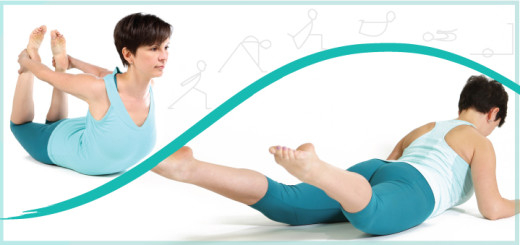


Olga, I just want to wish you a very happy Christmas and best wishes for 2021. Your generosity and intelligent, practical offerings through the year have been consistently wonderful, inspiring and uplifting for me. I always learn new things from you, and share them with my yoga students too. Thanks a million for all that you do and I’m looking forward to what comes from you in this brave new year to come.
I purchased both of the new yoga series and they are truly a treasure that I am continuing to explore. I love that I can access them through the APP. I have complimented them with all of the lovely practices you have previously posted and are available on the APP. I wish you and your family all of the best this holiday season and I look forward to what you will be generously offering in 2021.
Olga, I have enjoyed all of the articles and practices that you have posted this year. They are inspiring for my own practice and for my teaching. Your website, yoga series and app are a greatly appreciated resource.
I wish you and your family a happy and healthy Christmas and my very best wishes for 2021.